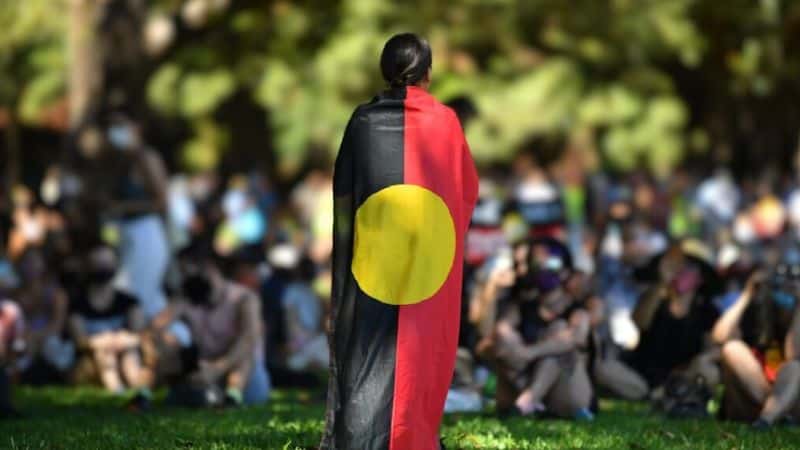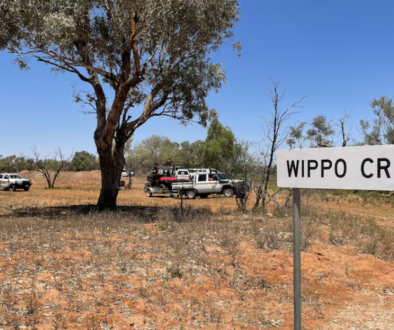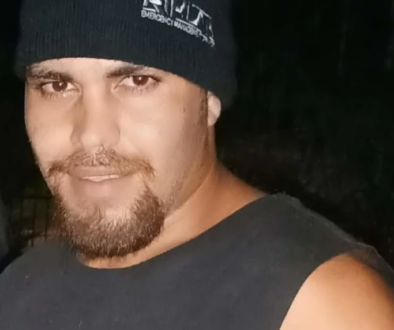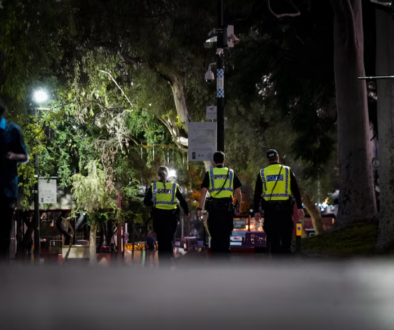How experience makes us different: Why “Yes” is the right answer
That I should support the “Yes” campaign in the forthcoming referendum is hardly surprising. “Yes” is my usual default position. No naysayer am I.

“Yes” tends to open up possibilities and afford opportunities. With “Yes” you are in with a chance.
I have seen the noxious bile which “No” campaigners have spewed forth onto social media sites, often in breach of Section 18C of the Racial Discrimination Act, 1975, relying on perceived disentitling behaviour or characteristics of Indigenous people, as a justification for denying them a voice to Parliament.
Like Victorian children, Indigenous people, at best, should be seen but not heard, according to many “No” campaigners.
The proposed Referendum is concerned with whether Indigenous Australians should have a special voice to Parliament about their own affairs, not about our affairs.
It is not to afford them decision-making status but only the right to be heard by our parliamentarians and, in turn, by Government and for that right – to be heard about their own affairs – no-one else’s, to be entrenched in the Commonwealth Constitution.
Prior to 1967, Indigenous Australians were invisible in the Commonwealth Constitution. They were not to be “seen or heard” in the Constitutional sense. Australia’s Aborigines were not counted among Australian citizens and they ranked along with flora and fauna. In 1967, they were subjected to the humiliation of having a Constitutional referendum conducted on whether they even had the right to be counted among their fellow Australians.
For about 70 years, until about 1950, their lives were governed by “protective” laws in every State and Territory except Tasmania (where a bounty on their heads had drastically reduced their numbers). Their nationwide population had shrunk from around 300,000 on the entire continent including Tasmania, in 1788, to about 60,000 by the time of the 1967 referendum. “Protective” legislation meant that under the guise of “protection”, the life choices and livelihoods of Indigenous Australians were the gift of the Protector in each State. This generally resulted in their being controlled in every aspect of their lives and literally ripped-off by White Australia. The rights to enjoyment of their land, to self-determination and to be paid for their work, were all denied to them.
In 1957, seven (7) Palm Islanders with the courage to protest about being paid less than 25% of the minimum wage, were taken in chains to Townsville to face trial. Even our trade unions turned their collective backs on Black Australia.
The Federal Government’s decision to hold a referendum in 1967 was no doubt prompted by the introduction of conscription in 1965, including to Vietnam. The Vietnam War was raging and we were going “All the way with LBJ”. Long abused Indigenous men could not otherwise have been conscripted because they were not Australian citizens. Once they became citizens in 1967, the Commonwealth could pass laws for them under the Constitution, including to induct them into the Army. Hundreds served.
Even then, 30% of Australians in some electorates in Western Australian and Queensland rejected the idea of Indigenous people becoming notionally equal before the laws of the Commonwealth, by voting “No” in the 1967 referendum.
How insulting, demoralizing and demeaning to be the subject of debate waged by your own countrymen as to whether you qualify even to be counted!
Such referenda provide open slather to racists and bigots. Many reviled gay Australians in the debate over whether to concede equal marriage rights (which was not even a Constitutional issue). That was a plebiscite rather than a referendum but with similar implications for those whose rights are placed on the line by Government. Back in 1829, in Britain, the House of Commons and then the House of Lords, debated whether to enact the Catholic Emancipation Act to grant the vote to Roman Catholics in the United Kingdom. It passed over stiff opposition.
Over a longer period, whether or not to elect Jews to become members of the British Parliament or to be eligible to vote was a controversy in the UK (the Duke of Wellington had been a consistent opponent of Jews being enfranchised) and the Jewish Disabilities Act was finally passed by the House of Commons in 1858. Read UK Hansard from those times and you will see the vitriolic hatred against Catholics and Jews by members of the UK Parliament, which those debates unleashed. To have the recognition of minority rights at the mercy of the majority is inherently unjust and undemocratic.
American political satirist, E.B. White observed that, “Democracy is the recurrent suspicion that more than half of the people are right more than half of the time. It is the feeling of privacy in the voting booth ….”.1 However, democracy does not extend to the majority oppressing minorities and refusing to listen to them, while advancing specious reasons for continuing to treat them as detritus, in arguing to deny them a Constitutional right of audience before Parliament.
Many intending “No” voters rely on the premise that “We are all equal, and no-one should be treated any differently, including Indigenous Australians”. Well said but this is a statement that could only be made by someone who is clueless about Australian history:
Starting in 1794, mass killings of Indigenous Australians on the frontiers of white settlement were first carried out by British soldiers, then by police and settlers – often acting together – and later by native police, working under the command of white officers in militia-style forces, supported by Colonial Governments. These slaughters occurred, without formal repercussions until as late as 1926, and took place in all States and Territories of Australia.
The University of Newcastle’s Centre for 21st Century Humanities, adopting stringent research methods, compiled a colonial massacre map:
*An average of 14 Indigenous Australians were killed in each massacre.
*Government forces were actively engaged in frontier massacres until at least the late 1920’s. At least 51 of the massacres were in reprisal for the killing or theft of livestock or property.
*Only once were colonial perpetrators found guilty and punished – in the aftermath of the Myall Creek killings, in 1838; 28 Aboriginal men, women and children had been bound and murdered and their corpses immolated by the white settlers.
*In New South Wales and Tasmania, between 1793 and 1833, most of the 56 recorded attacks on Aborigines were carried out on foot by detachments of soldiers from British regiments – an average of 15 people were killed in each attack.
*Between 1859 and 1915, an average of 34 people were killed in each attack.
*There have been at least 9 known cases of deliberate poisoning of flour given to Aboriginal people.
Evidence taken at the 1927 Royal Commission into the Forrest River Massacre in Western Australia referred to a “conspiracy of silence” among white settlers in the entire Kimberley district, in its thwarted attempts to find out what really happened. The testimony of one (1) survivor was referred to in the Royal Commission Report: “Many kartiya (white fellas) were too greedy for our land and didn’t see us as fully human”.2
Between 1910 and 1970 around 100,000 half-caste Aboriginal children were systematically seized from their birth families, many never to be returned. They became “The Stolen Generation”. The rationale: Aborigines were a dying race and half-caste children should be given the benefit of being able to grow up in white families.3
I have heard Christians, Jews, Muslims and Hindus disparage Indigenous culture as though the Aborigines’ intense connection to ancient sites and their spiritual symbiosis with their land and natural phenomena, somehow renders them inferior to adherents of monotheistic religions who, in point of fact, tend to be preoccupied with dietary and sexual prohibitions and restrictions, as well as with the sanctity of holy sites, be they in Jerusalem, Medina or Mecca.
In the twenty-two (22) years from the end of World War II, from 1945 to 1967, when the referendum on Aboriginal citizenship was held, Australia had promoted mass migration here by Italians, Greeks, Yugoslavs and we even subsidised UK migrants, by offering them passage to Australia and guaranteed residence and citizenship if they just paid GBP£10.
In virtually no time, British migrants and Southern European, newly naturalised “New Australians”, were voting about whether Indigenous Australians should even be counted as Australians, in a Constitutional Referendum. These economic refugees from Europe were already entrenched as Australian citizens, after just a few years on our shores. Add to them the Jewish refugees, persecuted in Europe, who were now also embedded in Australia and able to vote on the future of Australia’s first people, whose 40,000 year heritage had been trashed over the immediately preceding 200 years (the Jews’ 5,000 year civilization had been trashed over the preceding 2,000 years).
Some of these immigrant groups, who are keenly focused on their own “intergenerational trauma”, are too self-centred to recognise the intergenerational trauma which successive generations of white interlopers have inflicted on their Indigenous hosts.
I see “No” campaigners on the internet, ridiculing “Welcome to Country” ceremonies, particularly where we are asked to pay our respects to “Aboriginal Elders, past, present and future”.
I, too, agree that the “Welcome to Country” in its current form should be scrapped. It is typically an anodyne, even saccharine statement of defeat. It should be reframed defiantly in Sydney in the following terms and mutatis mutandis, in other regions:
“You are presently on Gadigal land, which successive Australian governments have purported to appropriate without paying just compensation or affording recognition and respect to the Indigenous Australians to whom it belongs. It is time that you confronted your own crimes against us and worked with us towards genuine healing and reconciliation, which means that you have an obligation to familiarize yourselves with, and learn the truth of our history, of living, suffering – and dying – with White Australia. We are grateful for the opportunities which modern Australia offers and want to be able fully to enjoy them with you”.
If it were up to me I would not hold this “Voice” Referendum. The Australian Government can make special laws for Aboriginal Australians which are “beneficial” and that extends to setting up a consultative body, accessible to the Australian Parliament.
There is no need for this referendum any more than there was a need to hold a plebiscite on gay marriage. Sadly, the “Voice” referendum will fail and Australia will be damaged in the councils of nations. The cause of Indigenous Australians will be set back once again.
Nevertheless, if there is to be a vote there is only one way to vote and that is “Yes”. Much more fortunate were the other Indigenous peoples of Oceania who remained majorities in their territories which were colonized. Ultimately, they became independent and sovereign. Only New Zealand, Canada and Australia are among the top ten (10) countries with the highest youth suicide rates (teenagers between 15 and 19 years). Their Indigenous populations share in common that they were overrun, overwhelmed, disrupted and displaced by white settlement. Among Indigenous Australians, teenage suicide rates are among the highest in the world. No sovereign states in our region, ruled by their Indigenous majorities, figure in the top ten countries with the highest youth suicide rates.
Rightists in Australia are exploiting the Voice referendum as an opportunity to vilify Indigenous Australians and cut back on their rights and on Australia’s anti-discrimination laws. They know that even with an Indigenous voice, reactionary governments will not pay heed to what is being said by Australia’s Indigenous people.
They have not listened before and will not start listening, whatever the outcome of the referendum.
Stewart A Levitt is Senior Partner with Levitt Robinson Solicitors, specialising in corporate law, banking & finance, and class action law, www.levittrobinson.com.
Foot notes:
1. White, E.B.,‘The New Yorker, The 40’s: The Story of a decade’.‘The New Yorker, July 3, 1943’.
2. Allam, L. and Evershed, N., “The Killing Times: The massacres of Aboriginal people Australia must confront”, The Guardian, 3rd March, 2019.
3. Report of the National Enquiry into the Separation of Aboriginal and Torres Strait Children from their Families, April, 1987, AHRC



